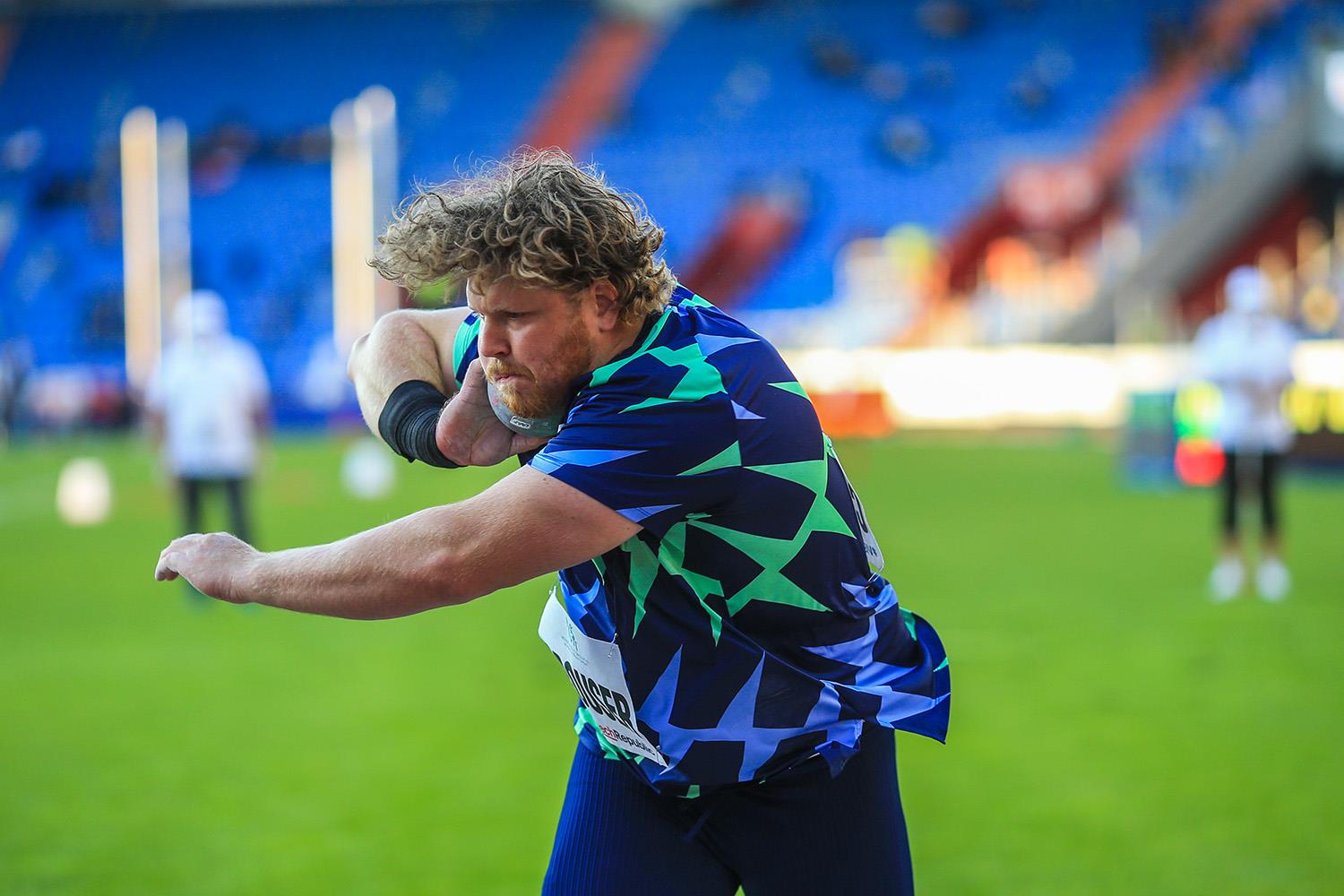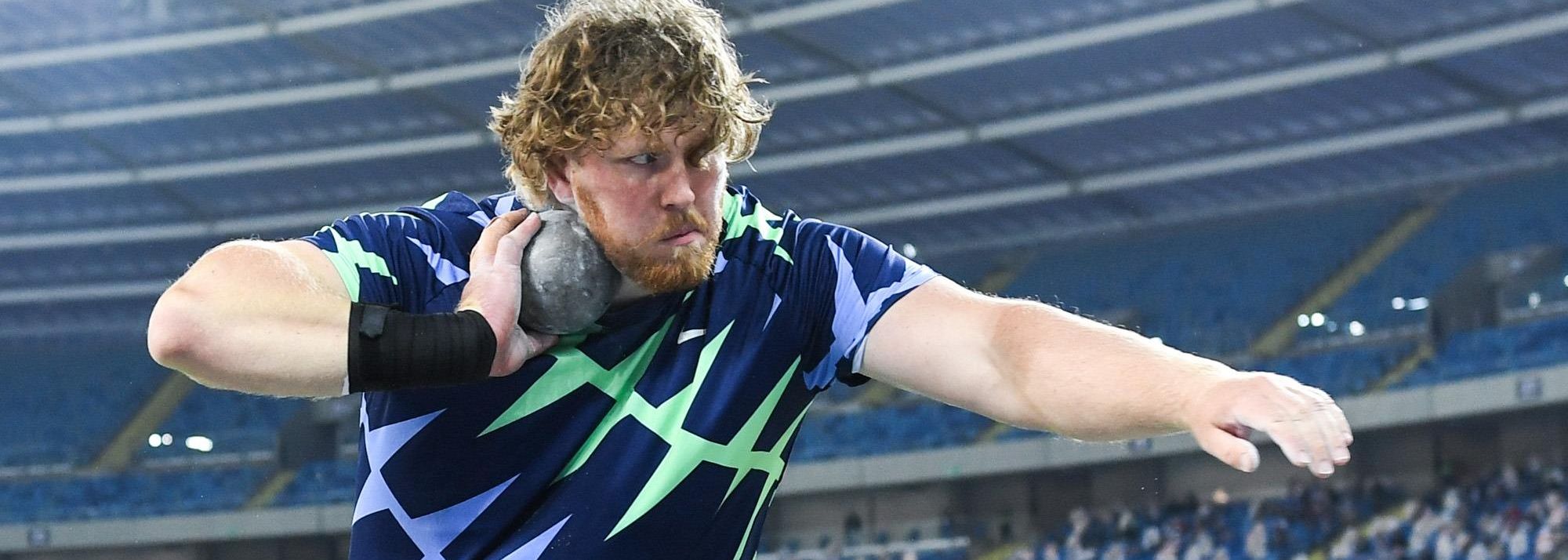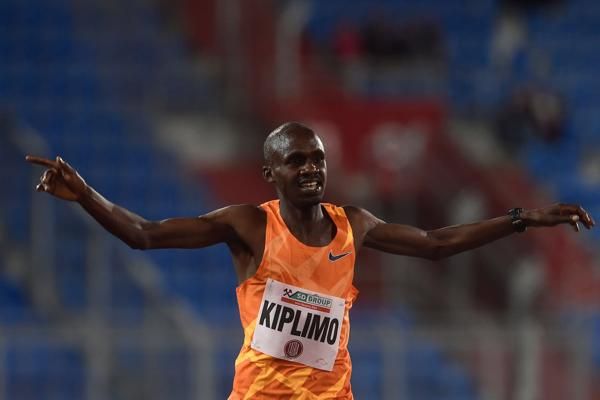Ryan Crouser at the Skolimowska Memorial (© Organisers)
Ryan Crouser is on an unprecedented shot putting roll.
Consider: the Olympic champion has won his last four competitions with throws of 22.56m, 22.72m, 22.70m and 22.43m, a stretch than can be considered as nothing less than a master class.
But then, consider his consistency: 19 of his 20 measured throws in those four meetings flew beyond 22 metres; 10 times the shot sailed more than 22.50m, a distance only 14 other men have ever managed to reach - half of them, only once in their storied careers.
That consistency is what the 27-year-old Oregon native is most pleased with as he continues to piece together one of the finest records in this global pandemic-ravaged season. And in the process, continues to hone in on the 23.12m world record set 30 years ago.
“I was really happy with the consistency most of all,” Crouser said of his victory in the World Athletics Continental Tour Gold meeting in Silesia last Sunday.
“22.70 was a great result, I was really happy with that, but consistently throwing around 22.50, pretty much into the same hole over an over again, is a pretty good indicator for me that eventually a big throw will come.
“I’ve laid a really good foundation technically and with what I’ve been able to do in the weight room during quarantine. I’m happy with that, so now I just need to wait for the one big throw to come. So I just set myself up as best I can - and fingers crossed that it will happen.”

Ryan Crouser in Ostrava (© Stepan Sipla / organisers)
In Des Moines on 26 August, Crouser sent each of his six throws well over the 22-metre line. In Silesia 11 days later, each of five measured throws followed suit. In Ostrava, where he won with 22.43m, four of his five measured efforts did as well.
“I was really happy with (Silesia) sort of just off the plane. Especially in the first three rounds. For those I felt really good. Then,” he quipped, “it was time for bed in the later rounds.”
Jetlag brought him down somewhat in Ostrava, he said, leaving him a little flat. But he still managed well.
“Day four coming from the US is always a little bit of a down day, just with jetlag catching up. I think I underestimated a little bit the toll that competing the day after getting off the plane would take on my body. I threw really well two days ago (in Silesia). It just knocked me down a little bit. I was a little sore, a little stiff. It took me a long time to get warmed up and get going.
“The distances weren’t too bad and I think if I can keep being consistent with the far distances, eventually the big 23-metre throw will come.”
That confidence comes courtesy of Covid-19 lockdown, a period that forced him to pull his training back to the bare essentials after his recent relocation to Fayetteville, where he moved to work as a assistant coach at the University of Arkansas.
“A lot of it has been adapting to change,” he said. “Since March I’ve been in a three metre by three metre block in the garage with just a lifting rack and a bar. I think we have 240 kilos in weight. So at least we have enough weights. But that’s all I have. I’ve been doing my med ball workouts under a bridge and I’ve been in an elementary school throwing out a parking lot.
“So it’s been really a lot of improvising and adapting but it’s also made me get back to fundamentals. And I think it’s made me love the sport even more because all of the top-end training facilities have been taken away. Most days it’s just me, and a shot put and a field. So it’s made me really appreciate that. I was able to get back to throwing more and I also feel that I’ve found my rhythm again in the ring. Kind of like I had in 2016.”
That was the rhythm that culminated in his triumph in Rio. But he’s also a much different athlete, he said.
“I developed a lot as an athlete since then. I’ve gotten bigger and I’ve gotten stronger. But the distances haven’t improved a ton. After the 22.52m in Rio I have gained 10 kilos in body weight and lots of strength, but I feel like my throw was almost robotic and a little bit stiff in the last few years. So I feel like I’m a much better athlete this year and having a much better rhythm throughout all of my throws.”
Crouser said he’s thrown 23 metres in training “a few times” and is confident that it will come again.
“It was always similar to what I’m in throwing now: consistently mid-22s and then on occasion a big throw that’ll be 50, 60 or 70 centimetres farther than kind of what my average has been. So that’s what I’m working towards. The most frustrating thing is that I can’t choose when it happens.” All he can do, he said, “is prepare myself well and do all the little things right and then let it happen.”
“That’s the attitude I’m taking towards it,” he continues. “To do anything I can to set things up as best as possible, to let that big throw happen and then get out of my own way and just let it happen instead of trying to put so much pressure on myself to try to force it.”
Next up? Zagreb’s Continental Tour Gold meeting next Monday (14) where the shot put takes place the day before the main programme, and then again in Belgrade on Thursday (17). On those occasions, minus the jetlag.
Bob Ramsak for World Athletics






